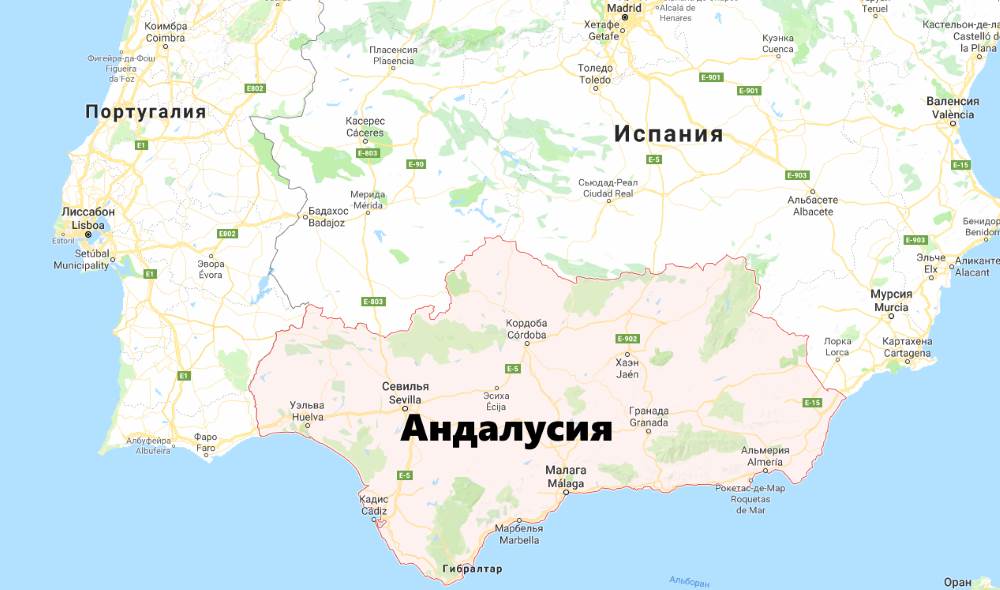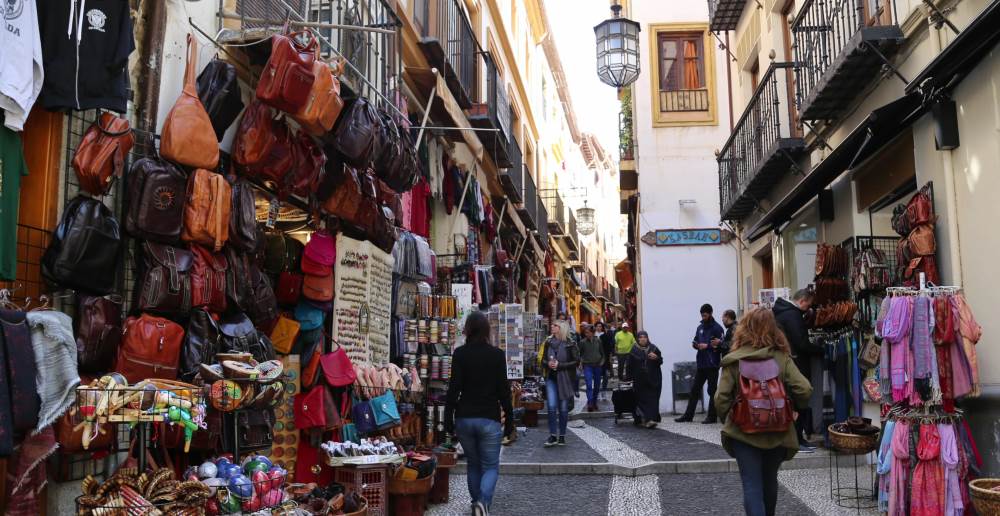Even the most beautiful descriptions and photos of Andalusia can not convey all the charm of these wonderful places. The rich history of the region has given many cultural monuments and architectural ensembles. The magnificent nature and towns with their snow-white houses tucked into orange orchards have been a source of inspiration for many famous artists, poets, and filmmakers. Cervantes, Mérimée, and Hemingway dedicated their works to this magical land. The historical sites of Andalusia are concentrated in its main cities: Seville, Granada, Malaga, Cadiz and Cordoba.
Andalusia on the map of Spain
Climate and Nature of Andalusia
Andalusia is the hottest region of Spain. In summer the thermometer can rise to 37C. Even in September the temperature often exceeds 30C. Winters here are cooler – 16-18C, at this time of year there is often heavy rain. Lovers of mild, moderately warm weather is best to visit Andalusia in the spring or fall.
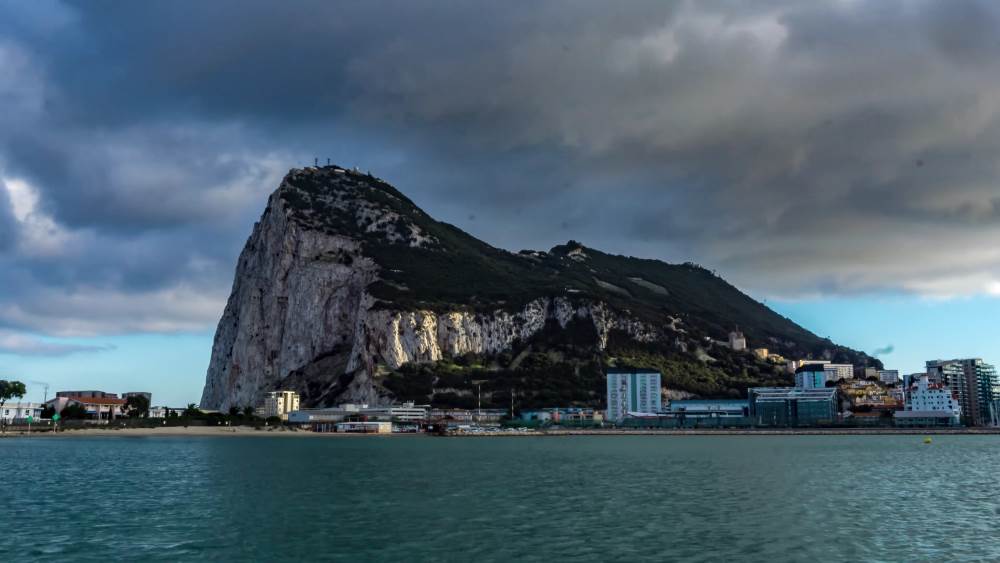
The nature of this region is characterized by an amazing variety of landscapes. Mountain peaks contrast with fertile plains, and desert areas are replaced by magnificent forests and lakes. Andalusia is rich in natural parks and nature reserves, the largest of which are Doñana and Sierra Nevada. The most common plants in the region are oak, pine, fir, eucalyptus, almond and olive trees.
The fauna of these places is no less rich. The migration routes of migratory birds pass through Andalusia, so you can often find feathered visitors from different parts of the world here. Of mammals, there are deer, roe deer, ibex, rabbits, as well as many predators: wolves foxes, lynxes, otters and others. Many natural areas are home to poisonous snakes.
What to see in Andalusia?
Andalusia is a region in southern Spain, washed by the waters of the Atlantic Ocean, the Mediterranean Sea and the Strait of Gibraltar. Picturesque nature, majestic mountains, creating a unique landscape in combination with the sea, well-kept and safe cities with beautifully preserved medieval buildings, beautiful resorts, the cleanest beaches, excellent environment, hospitable people – all this attracts tourists to Andalusia from all over the world.
It is here that the traditions and customs of Spain with its romantic white stone streets, bright and passionate flamenco, which originated in this area, the indispensable gazpacho and the famous sherry are most clearly and multifaceted. However, in addition to Spanish culture, Andalusia was influenced by many other ancient civilizations: Arab, Jewish, Phoenician and Roman. All this is reflected in the unique monuments of history and architecture of Andalusian cities.
Granada
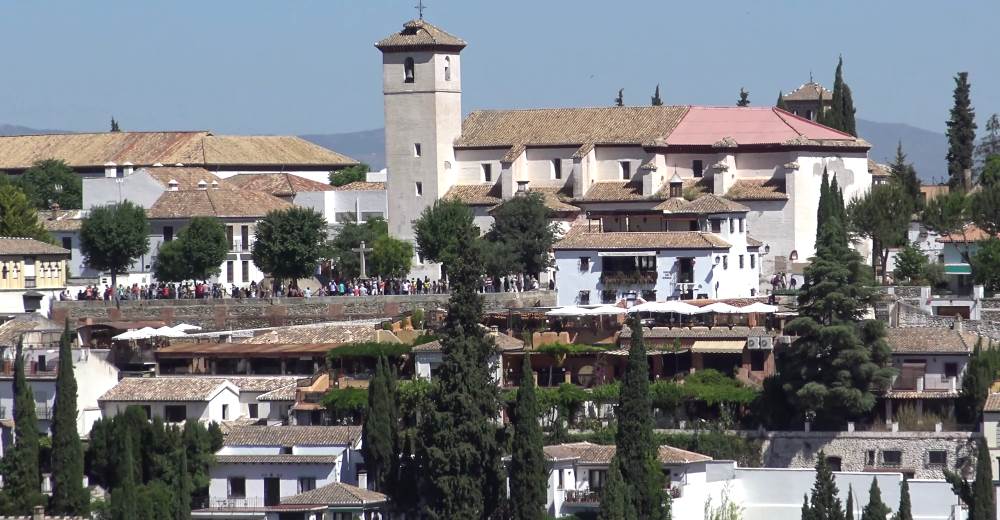
One of the most famous attractions of this ancient city is the Alhambra, a palace and park complex built by Moorish architects, which is called the eighth wonder of the world. The Alhambra ensemble includes palaces, a fortress, squares, towers, beautiful gardens, pavilions, summer houses, picturesque courtyards and fountains.
Other famous sites in the city include the Generalife Gardens, the Renaissance Cathedral of Granada with the Royal Chapel, and the ancient Moorish quarter of Albaycin.
Seville
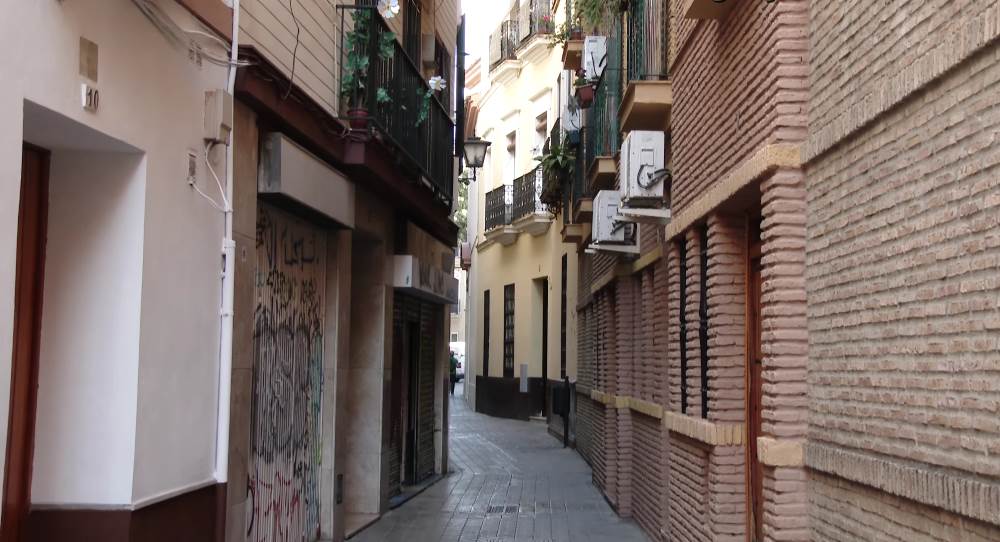
The narrow streets of the Andalusian capital retain the unique atmosphere of antiquity. The city is rich in unique monuments of architecture, among which is the unique Alcazar Palace in Seville. For many years it was the royal residence, and today its doors are open to many visitors. Inside the palace there are luxurious halls, outside there are landscaped gardens and cozy courtyards. Seville Cathedral, one of the largest temples in the world with a rich Gothic altar, on the construction of which more than 3 tons of gold was spent.
It is also worth visiting Torre Del Oro, the defensive tower of the fortifications, which is a true work of art.
Cadiz
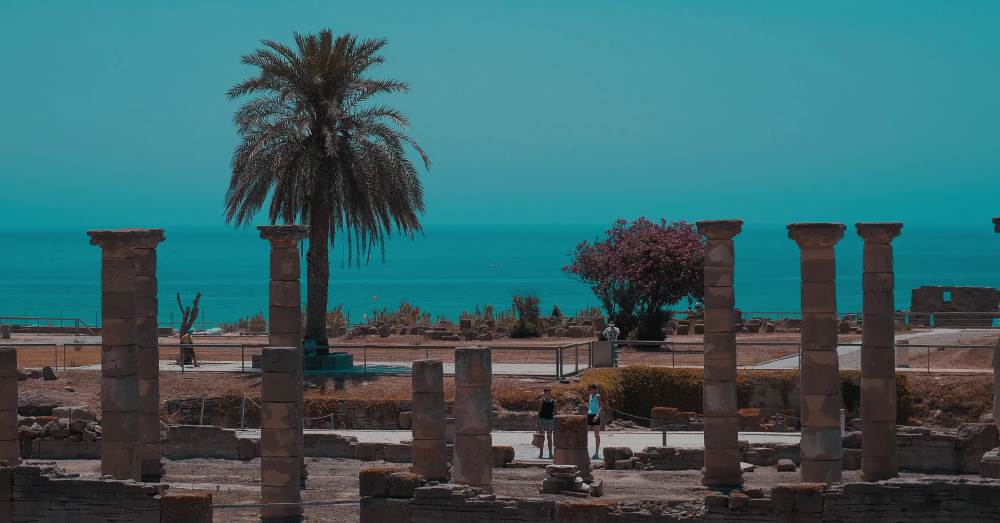
The oldest city in Europe, founded by the Phoenicians about 3,000 years ago, is divided into two main areas: the new and the old. New Town is a resort area with clean sandy beaches, numerous retail outlets and entertainment venues. The old part of town is a string of narrow streets leading to the main square, on which is located the old Cathedral of the Holy Cross, which combines elements of three architectural styles. Among the most ancient local sites are the ruins of the fortress wall (8th century BC).
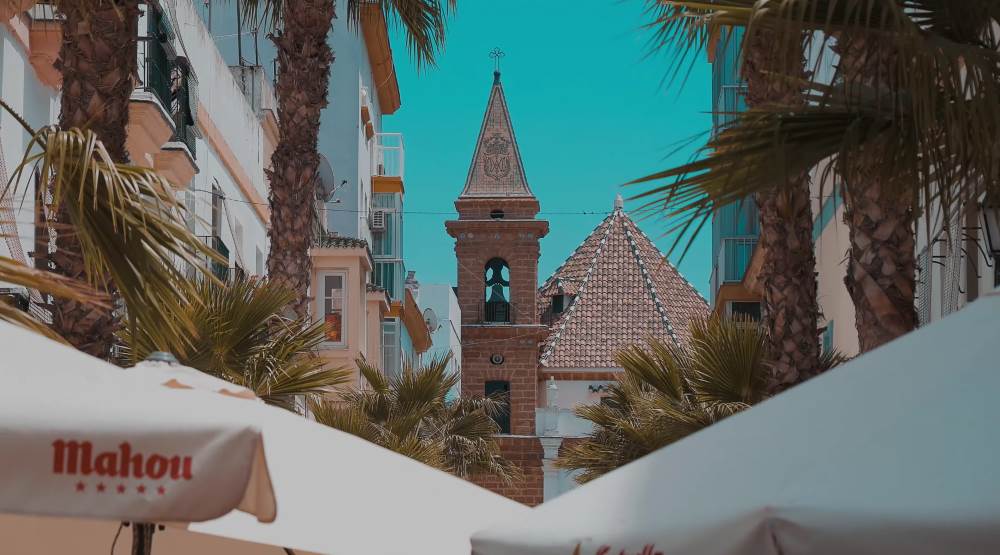
While in Cadiz, be sure to visit the fortresses of San Sebastian and Santa Catalina, the baroque Carmen Church, the Candelaria Bastion with a beautiful view of the bay, the city museum, whose exhibition consists of archaeological finds, a rich collection of paintings and a unique doll collection, the Plaza de España, where the monument to the Constitution is located. Art lovers will appreciate the Oratory of Santa Cueva with its two chapels, home to a triptych by Francisco Goya.
Rhonda
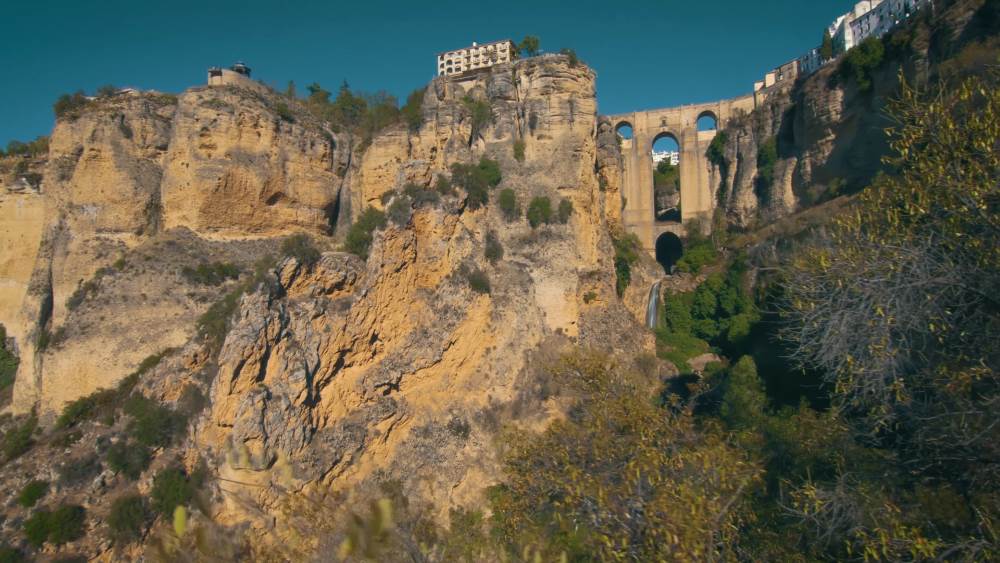
This town is known for its unusual location: it is located on a steep cliff above a deep ravine, as if floating above an abyss. Among the sights worth seeing here is the symbol of the city – the New Bridge (Puente Nuevo), built over the river Guadalevin. It offers wonderful views of the city center and the gorge. Numerous mysterious legends are associated with the name of this bridge.
The old city of Ronda is rich in historical monuments: here you can see the monastery of Santo Domingo, known for the meetings of the Inquisition in former times, the palace of Mondrajón, which now houses the Museum of Primitive History, the ancient bullring, now no longer in operation. It was in this city that the widespread Spanish tradition of painting houses white originated.
Malaga
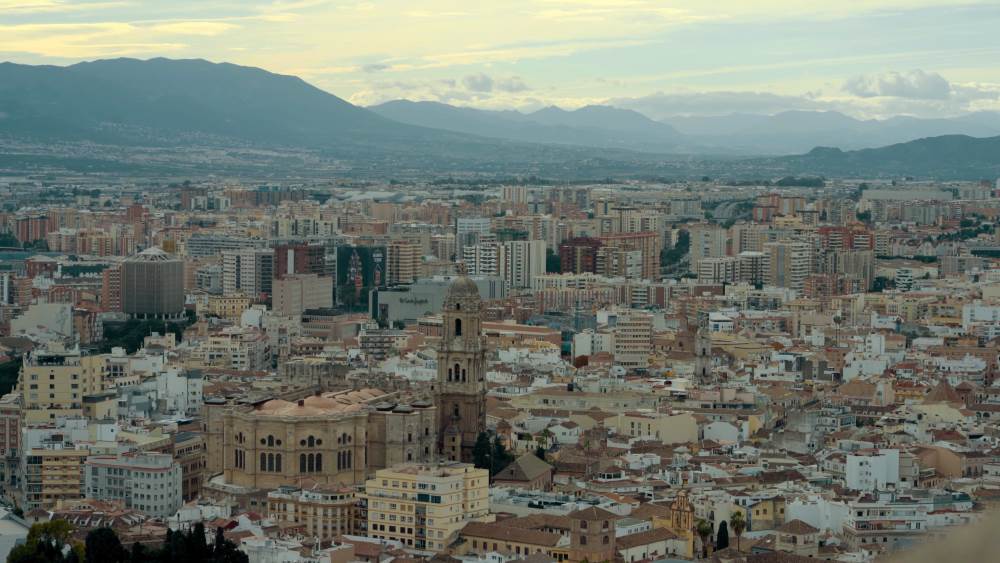
One of the main attractions of this coastal city is the museum of Picasso, who was born here. Tourists are also attracted by the City Hall building, the ancient Moorish fortress of Alcazaba, another fortress – Gibralfaro, standing on a high mountain, which offers a magnificent panorama of the city and the Strait of Gibraltar, the Cathedral with a rich interior decoration, the Bishops’ Palace, the Roman theater of the 1st century BC, the Car Museum.
In addition to ancient monuments there are the cleanest beaches, equipped with everything you need for recreation, both active and relaxing, as well as large shopping centers.
Jerez de la Frontera

This city is the birthplace of the world-famous variety of Spanish wine. In addition to the major wineries, Jerez de la Frontera is famous for its flamenco tradition and its highly successful dancing horse shows. Among the city’s sights is the Alcázar of Jerez de la Frontera, with its octagonal tower and Arab baths.
Cordoba
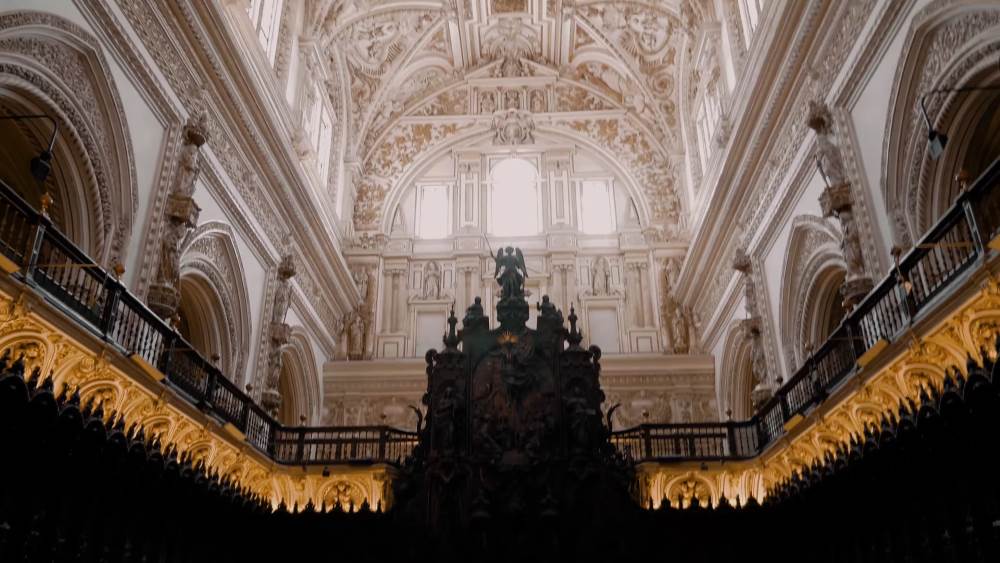
In the architecture of this colorful city, you can see the influence of three cultures at once: Christian Arab and Jewish. There are cathedrals next to mosques and synagogues. Therefore, no one is surprised by the presence of a Roman Catholic cathedral located in the former Mesquita Mosque. The vaults of the unique building are supported by majestic columns made of granite and white marble.
Tourists will also find it interesting to visit Constitution Square, where executions were once carried out, and the Viana Palace, known for its magnificent interior, picturesque garden and beautiful patios.
Tariff
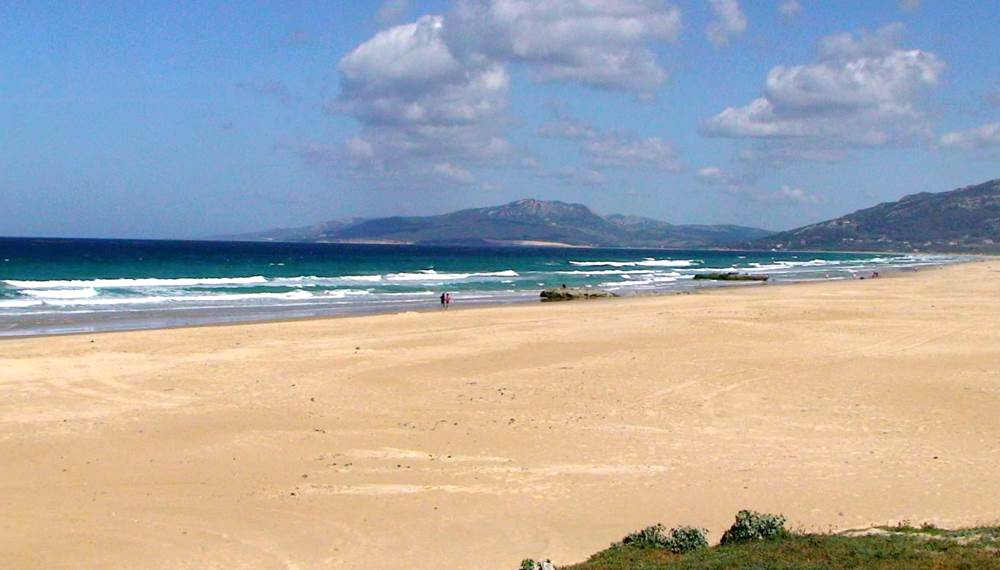
The warm waters of the Mediterranean Sea and the cold currents of the Atlantic meet in this town. At the border of the two giant bodies of water you can clearly see the difference in color of the water: where the sea, it is blue, and in the territory of the ocean – greenish. This feature attracts many tourists wishing to be photographed against the unusual background. Surfers are also not ignored in Tarifa, who can do their favorite thing here almost without restrictions, because the strong waves are the most common phenomenon in this place, open to all winds.
Baeza
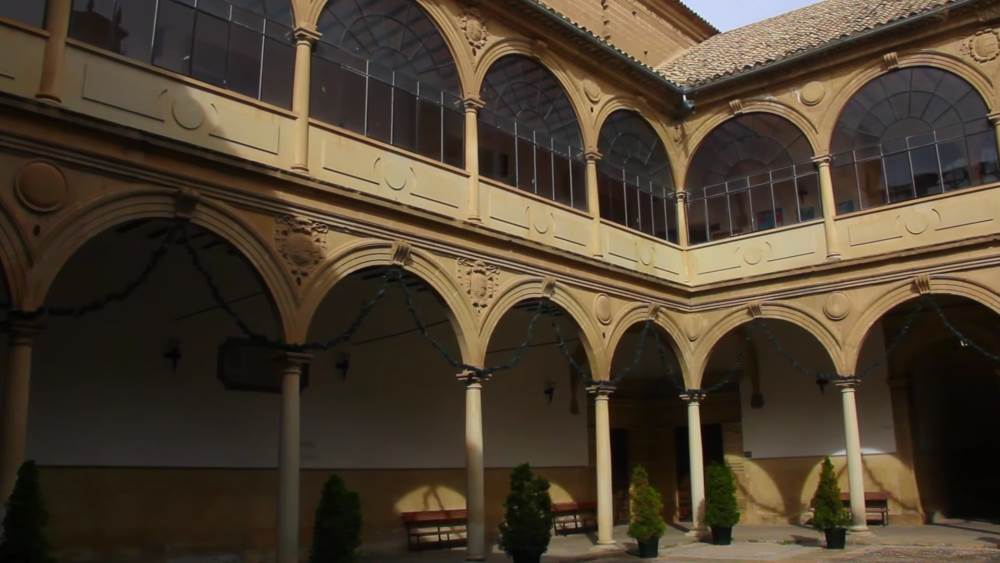
Not far from the Parque Natura de Cazorla, among olive groves, is the historic city of Baeza, famous for its Renaissance monuments. In the old part of the city, the Santa Maria Cathedral with its rich interior, the Palacio de Jabalquinto, the Lion’s Fountain in Plasa del Populo, the former Antigua Universidad and the City Hall are definitely worth seeing.
Nerhe
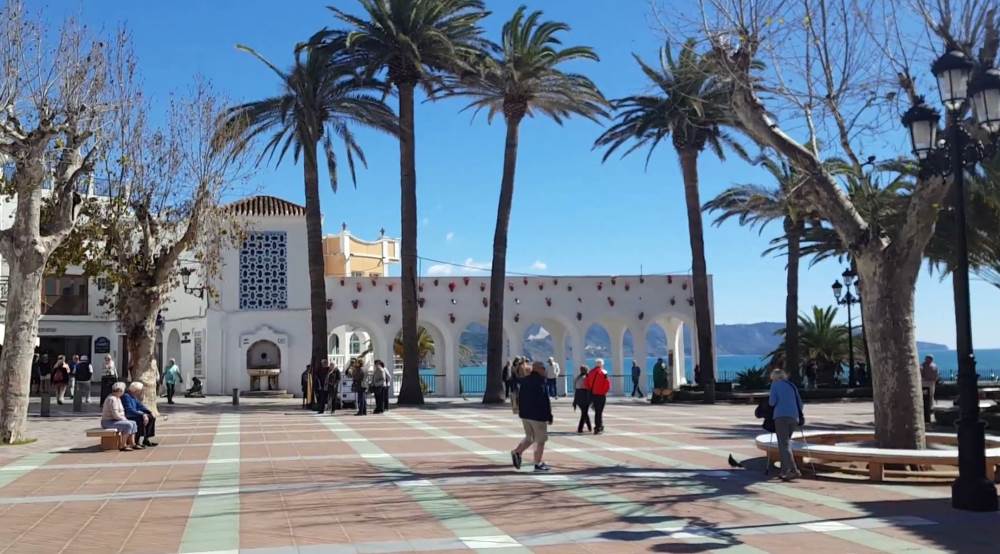
A small resort town in the province of Málaga is known for a natural viewing platform called “Balcony of Europe”, formed after the earthquake and located on a steep cliff, which offers spectacular views of the Mediterranean Sea. Especially impressive is the sight of tourists during storms.
Festivals of Andalusia
The cheerful Andalusians not only love bright and cheerful celebrations, but they also know how to hold each event so that viewers and participants will remember it for a long time.
Carnival

Every February in Cadiz is marked by a colorful and exciting carnival, which is the main cultural event of the year. Townspeople begin to prepare for the event well in advance, and tourists make hotel reservations in advance.
For 10 days on the streets of the old part of town you can see a variety of costume shows, participants are local residents, dressed in the most bizarre clothes of different historical eras. Visitors to Cadiz at this time have the opportunity to become spectators of unusual competitions, performances of famous singers and dancers, colorful holiday fireworks, as well as a grand procession through the main streets.
Seville Fair
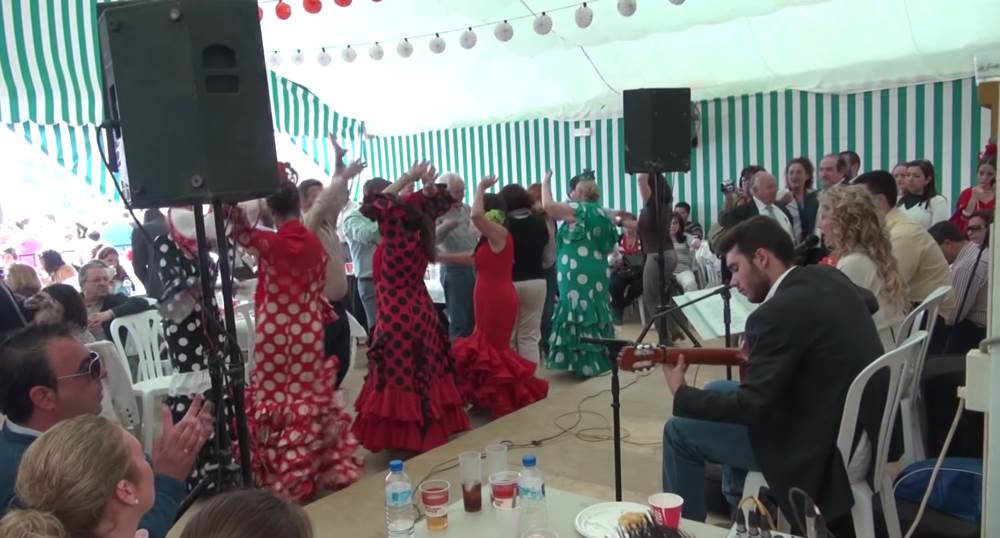
This event has been held regularly in late April and early May since 1846. The sounds of flamenco, wine tasting, and merry songs and dances are heard throughout the week’s festivities.
Holy Cross Festival

The time of the event is the first days of May. These days, local residents compete in the skill of making and decorating floral arrangements of crosses, which are then installed on the streets, squares and balconies.
Patio Fiesta
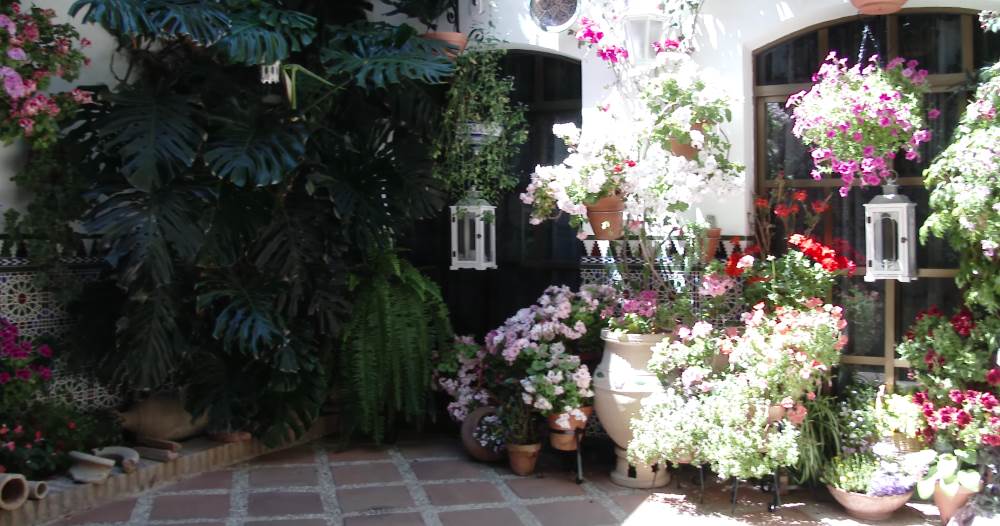
In the first days of May, Cordoba hosts an annual patio festival, which is a competition for the best patio. Homeowners decorate their patios with all available decorative means, chief among which are flowers and hedges. Elegant decoration of the yards can be appreciated by everyone. The extensive holiday program includes colorful performances and musical shows.
Grape harvest
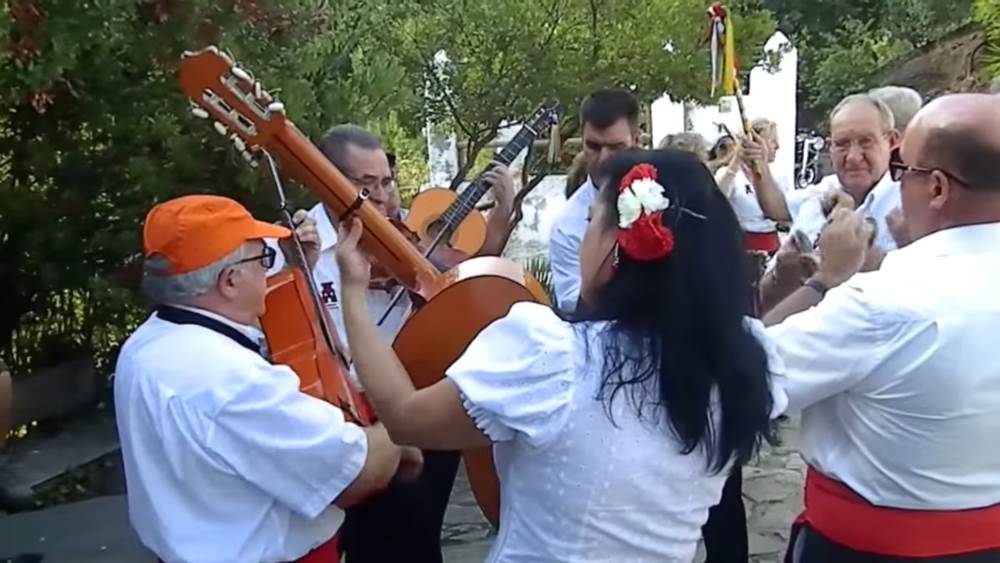
The end of summer in Andalusia is associated with the celebration of the beginning of the wine season. At the opening of the Fiesta de la Vendimia in Jerez de la Frontera, the queen of the feast is chosen from among the most beautiful girls. Participants in a solemn procession treat the audience to grapes, other fruits and sweets. Sales, colorful performances and tastings of fine wines are indispensable attributes of this event.
Entertainment and nightlife in Andalusia
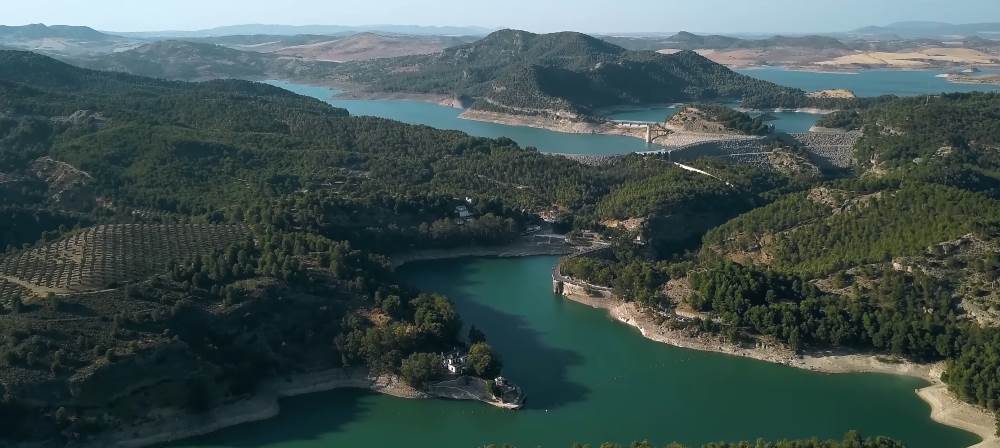
In addition to historical sites Andalusia offers its guests an unusually rich variety of entertainment. Every traveler will find something to his liking.
Among the many opportunities that this hospitable region offers vacationers are:
- Clean and well-equipped beaches, where there are all conditions for diving and surfing (the most famous of the resort areas are the Costa del Almeria, Costa de la Luz and Costa del Sol).
- Mountains great for ecotourism. The Sierra Nevada Massif, where the largest ski resort is located, is very popular.
- National parks and reserves with a unique landscape, flora and fauna.
- An abundance of shopping malls and markets.
- A wide range of entertainment venues: clubs, bars, cinemas, amusement parks. Most nightlife (clubs and discos) with exciting parties and an extensive entertainment program are concentrated in Cordoba, Cadiz and Seville.
How to get to the cities of Andalusia?
From the international airports of Madrid and Malaga and from the domestic ones in Almeria, Cordoba, Granada and Jerez de la Frontera, you can go anywhere in Andalusia. The Madrid area can also be reached by train or bus from Cordoba, Seville and Malaga, or by car: from Malaga northwards, past the Torcal National Park and the El Chorro Gorge; from Madrid, through the Despeñaperros Reserve, where landscapes of amazing beauty open up around every corner.
Where to stay?
In Andalusia, travelers will find many hotels of different levels. Among them are luxury hotel complexes, such as Hotel Alhambra in Granada, located in an ancient castle and preserved the original layout, Posada del Patio in Málaga, Exe Conquistador in Cordoba.
To get to know Andalusia better, it is best to stay in Seville or Granada, where you can easily get to all the surroundings of the region. For beach lovers in any coastal resort has a wide range of hotels in different price segments.

